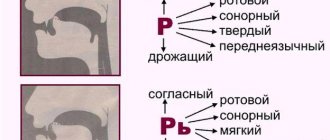A modern person can hardly imagine his own life without all kinds of gadgets and devices. They not only significantly simplify everyday life, but also allow you to streamline a number of processes, thereby eliminating the need to independently solve some routine tasks. In this context, the question of what it is and what is the automation of technological processes and production is becoming increasingly significant and relevant?
The fact is that many procedures at enterprises and even entire specialties today are gradually being robotized. Manual labor is being replaced by machine labor. All kinds of CRM and ERP systems are being introduced to improve overall efficiency. Further in the article we will analyze in detail how exactly this is done, what risks it entails and what opportunities it opens up.
We draw your attention to the fact that, even if you do not plan to resort to the described manipulations in the near future, it is worth diving into the topic in advance. Because the transition to mechanized systems is something predetermined and certain.
The essence of automation of technical processes and production
Measures for robotization and organization of internal work of the organization are of paramount importance, since they guarantee a reduction in defective products, a reduction in waste, and an increase in labor productivity. They represent a certain set of methods, the general mission of which is to create a holistic integrated system. One that ensures the management of any business processes without involving people.
Under favorable conditions, it satisfies a whole list of requirements and criteria:
- is a complex phenomenon from a technical point of view;
- requires equipping production with innovative technologies;
- helps simplify the work of staff;
- reduces the cost of production, optimizes costs;
- establishes and coordinates technical processes;
- ensures continuous improvement of internal methods and mechanisms.
Among the basic components are the level of technology, as well as its productivity. In this context, automation can be represented as a smooth replacement of traditional techniques with modern technologies; an ongoing process that is not limited to single events. What is noteworthy is that it is regularly updated and modernized, replacing old forms with new - more advanced ones. The general meaning boils down to a total transition from manual routine labor to instantaneous machine operations.
Important! The ideal production cycle is one in which all tasks are solved by machines, and a person is assigned the role of exclusively a controller-operator.
In addition, it is worth mentioning that this procedure involves robotic diagnostics of software systems, as well as reporting tools. The means for its implementation consist of fixation elements that control the processing of information by installations for equipment and workers.
Where is automation used?
Today, when technology does not stand still, and leading developers surprise the world with new discoveries, it is very important to keep up with developments.
Due to the fact that every year new developments appear, the names of which remain unfamiliar to many to this day, a question arises in the minds of many people like: “Automation - what is it and why is it necessary?”
In view of the fact that it is already the 21st century, humanity has long ago decided to switch from work done by hand to the use of machine technology. Of course, manual labor is still valued today. However, for productivity to be more productive, such work alone will not be enough.
In order to make working conditions as comfortable as possible for people, and the process of functioning of equipment more improved and adapted for its easy operation, automation was created by technologists.
Today, this system implements itself in various directions, for example, in such cases as:
- Production automation was created to improve the internal labor system. Let’s say more equipped machines that allow a larger volume of production to be provided with work.
- The training system is designed to work with technology that makes it possible to expand the options for obtaining information and facilitates learning new programs.
- Automation involves the areas of design, planning and control.
- It implements business processes.
The technical support system helps increase labor productivity and improves the quality of production.
Goals and objectives automation of those processes
In pursuit of clear and coordinated internal work, business owners often resort to the following manipulations:
- downsizing;
- increase productivity (for example, make equipment operate around the clock, thereby eliminating downtime);
- increase profits (often neglecting readjustment and repair);
- experiment with quality;
- reduce the volume of unfinished production;
- minimize costs for raw materials;
- reduce the cost of manufactured goods;
- trying to make workplaces safer.
However, if we are talking about specific tasks for robotization, then they look more concise and straightforward:
- increase efficiency;
- eliminate dangerous and unfavorable factors;
- set up optimization;
- build an automatic control system through the use of special sensors and other fixing elements.
Summarizing the above, we can establish that the process under consideration helps to eliminate such a large-scale problem as the human factor. In other words, businessmen are beginning to save on personnel, choosing more ergonomic and rational options for redistributing resources.
Equipment for automation and control systems in production
Companies providing engineering services, including the development of automated process control systems, have the following equipment for sale:
- control panels;
- distribution cabinets;
- alarm devices;
- relays, controllers, switches;
- starting and protective devices of electrical equipment;
- software tools.
During the implementation of projects, process engineers establish the optimal location of automation devices on process equipment, the placement of remote control, switchboards, and laying of cable lines.
Ready-made solutions for all areas
Stores
Mobility, accuracy and speed of counting goods on the sales floor and in the warehouse will allow you not to lose days of sales during inventory and when receiving goods.
To learn more
Warehouses
Speed up your warehouse employees' work with mobile automation. Eliminate errors in receiving, shipping, inventory and movement of goods forever.
To learn more
Marking
Mandatory labeling of goods is an opportunity for each organization to 100% exclude the acceptance of counterfeit goods into its warehouse and track the supply chain from the manufacturer.
To learn more
E-commerce
Speed, accuracy of acceptance and shipment of goods in the warehouse is the cornerstone in the E-commerce business. Start using modern, more efficient mobile tools.
To learn more
Institutions
Increase the accuracy of accounting for the organization’s property, the level of control over the safety and movement of each item. Mobile accounting will reduce the likelihood of theft and natural losses.
To learn more
Production
Increase the efficiency of your manufacturing enterprise by introducing mobile automation for inventory accounting.
To learn more
EGAIS
Eliminate errors in comparing and reading excise duty stamps for alcoholic beverages using mobile accounting tools.
To learn more
RFID
The first ready-made solution in Russia for tracking goods using RFID tags at each stage of the supply chain.
To learn more
Certification for partners
Obtaining certified Cleverence partner status will allow your company to reach a new level of problem solving at your clients’ enterprises.
To learn more
Inventory
Use modern mobile tools to carry out product inventory. Increase the speed and accuracy of your business process.
To learn more
Mobile automation
Use modern mobile tools to account for goods and fixed assets in your enterprise. Completely abandon accounting “on paper”.
Learn more Show all automation solutions
Introduction of automation into production
The main role of introducing automation systems is to increase the level of efficiency, mobility and ease of work of employees.
Thanks to these changes, the level of competitiveness in the market is increasing and the resource base is being used powerfully. Automation of production can be carried out in several ways:
- Partial. Only some equipment that performs a number of actions that are inaccessible or difficult for humans is subject to automation.
- Complex. Covers the production chain of a separate workshop or unit that performs a series of actions to solve a specific problem.
- Full. Control and management are being transferred to special equipment covering all stages of production. This occurs in the case of a stable and practical regime, and also when working conditions are extremely dangerous or unbearable for the worker.
To better determine the degree of automation, you should know its effectiveness for a specific type of production.
Approaches, methods and directions of automation of technological processes
The vast majority of foreign organizations robotize their own production based on a clearly defined strategy. In other words, they establish and coordinate the solution of basic routine tasks, which allows them to achieve global goals many times faster. To identify what needs to be solved, various positions, parameters and indicators are preliminarily assessed. For example, how do the declared cost and overall performance compare, etc. Comparison helps to understand whether robotization will bring benefits.
Why this approach seems logical:
- First, business processes that require improvement are identified;
- then the possible fruits are calculated taking into account the costs;
- The automation procedure starts.
As for the last point, serious difficulties may arise with it in Russia. This circumstance can be explained quite simply: not all companies fully understand their own missions, goals and objectives. As a result, the process is not effective. To significantly improve productivity, you need to immediately identify key points and nuances - only then will the business win. It is worth mentioning that meaningful goal setting allows you to change the attitude of employees both towards the company as a whole and towards the performance of their duties. In addition, it helps to keep a business afloat even during periods of stagnation and crisis.
Quite often, process automation needs restructuring or reengineering. And this, as we know, is accompanied by huge expenses and requires special knowledge, skills and competencies from managers. Systematization of business with parallel scaling can help in solving such problems. Thanks to this, the manager, on the one hand, leaves the operating system, freeing up time for more complex intellectual tasks, and on the other hand, expands his own business, while simultaneously increasing profits.
For example, special software can help with this. Cleverence offers various solutions for business (shops, warehouses, various institutions and production). Contact us for help in finding suitable software and equipment for automation.
Unfortunately, in modern Russian realities, expansion does not always mean an increase in profitability or profitability. In addition, many technical processes are robotized incorrectly or thoughtlessly.
What can be automated in business?
It’s definitely impossible to automate everything, since there are such things as communication, human thinking, communication with clients, etc.
There are a number of activities that are excluded from the processes and can only use some programs, but not be fully automated, for example, corporate culture, personnel selection, personnel management, and company management as a whole. These activities differ from business processes by a high level of sociality, involving a person not only as an employee, but also as an individual. But the rest of the processes can be completely automated. As we have already mentioned, there are three main groups of business processes.
Process group | Type and features of automation |
| Managers are business processes that are included in the strategic management and management of the organization. | CRM, ERP, project management systems, analytical systems. The manager's workplace requires full access to company data, advanced analytics, and the ability to delegate and redistribute tasks. |
| Operational processes are a set of processes that make up the main activities of the company. This is exactly what we do at work: production, development, marketing, sales, support, etc. | CRM, ERP, project management systems, ECM, WMS, CAD, CAD and other specialized systems. They must be either universal (all departments in one information system) or integrated with each other. |
| Supporting processes are processes that solve the internal problems of the organization: system administration, ITSM, accounting, logistics, etc. | Specialized software that can be integrated with the previous group or work independently (1C, ticket systems, logistics routing systems, M2M, etc.) |
| The mentioned activities have a high human factor. | Programs for personnel management and selection, corporate portals, chats, instant messengers, etc. Those programs that make work easier, gamify processes, unify communication, but do not exclude the human factor in those processes where it is decisive. |
How the automated technological process is carried out
Implementation is divided into several stages depending on the type of activity being implemented. For example, experts may be responsible for:
- development and inclusion of automated control systems models;
- creation of documentation confirming the expediency of all performed manipulations;
- drawing up plans for work;
- formation of calculation schemes;
- analysis of laboratory studies and experiments;
- generation of descriptions for designed mechanisms, in particular, their operating principles.
Responsibilities may also include setting up equipment and monitoring its operation.
How to choose specialists
The ideal candidate for working with the described tasks is one who has professional skills and competencies and has a number of important qualities. In particular, he must be able to:
- make decisions quickly;
- constantly monitor and track changes;
- think logically;
- have technical ability;
- freely analyze impressive amounts of information;
- collate data;
- concentrate and not lose attention, regardless of external circumstances;
- perform even monotonous routine work diligently.
In addition, it is very important to be resilient and stress-resistant, to have a high level of personal motivation and interest.
Types of Factory Automation
The replacement of human labor with machine labor is carried out in different directions. In this case, appropriate equipment is used - it can be relatively simple or represent entire software and hardware complexes. There are several types of automation.
Numerically controlled (NC) machines
We are talking about machines programmed to perform certain jobs. The entire technological process here is carried out under electronic control. Human intervention is kept to a minimum. It consists of setting up and checking equipment, installing and removing workpieces. One worker can handle this, and several machines can be under his control at once.
Numerically controlled machines, operating virtually autonomously, are capable of producing high quality products. They process parts very accurately within the required time and “do not get tired”, unlike craftsmen who work manually. Such machines cope with tasks that cannot be performed using conventional devices. They help to clearly plan activities due to the fact that the time for performing the operation is set in advance.
Another advantage of this technology is production flexibility. It lies in the fact that when working with parts of a different type, it is enough to change the program, and the previously used one can be stored on the drive and used again if necessary.
Robots
Such machines are increasingly being included in production automation in order to facilitate human labor. They handle complex workflows with ease. Robots vary in appearance, size, and functionality. The range of tasks that they are capable of performing is very wide. This includes loading heavy or dangerous objects, packaging goods, finishing, welding and many other works.
There are robots whose every movement is controlled by an operator. Others related to automatic machines follow a given program. They are not able to correct the actions being performed, and here, too, the participation of the worker is required. Autonomous robots are the most independent. Such mechanisms perform programmed operations. Functioning according to given algorithms, they adjust actions if necessary. Such devices take on all the work on a certain section of the conveyor, without the need for human labor.
Information technology (IT)
This vast area is characterized by the use of computer equipment. Unlike other tools used in production automation, they primarily cover the sphere of intellectual work. Such technologies are aimed at various ways of handling information - its creation, receipt and processing, storage, distribution.
In modern manufacturing, computers have become vital in data management. People get the opportunity to free themselves from performing routine and complex mental operations. Moreover, the speed of the human brain cannot be compared with the productivity of a machine. In addition, properly configured equipment works flawlessly and can cope with a colossal amount of work.
Application of computer-aided design systems
This refers to software, which is divided into separate areas - CAD/CAM/CAE. Each of them helps solve highly specialized problems, and the most suitable system can be applied at a specific stage of production. With this kind of computer support, it is possible to produce complex parts and reduce their production cycle.
Using application programs, algorithms for the operation of the machines used are created. It becomes possible to design products, predict their qualities and characteristics, and determine the optimal manufacturing technology. These systems help to implement ideas of any complexity. The speed and accuracy of computer programs contributes to obtaining high-quality products and reducing their cost.
Flexible Manufacturing Systems (FMS)
Such complexes help complete product manufacturing cycles in a changing production environment. The system responds in a timely manner to predictable and unforeseen circumstances and adapts to them. For example, if necessary, the order of work operations is changed, the design of the product is adjusted, and the assembly of parts is simplified.
Automation of production carried out using this method cannot be called economical. The cost of the equipment itself, as well as its installation, is high. In addition, it requires qualified personnel capable of operating such equipment and carrying out complex pre-planning. However, these points are compensated by the high reliability of the system, a significant increase in labor productivity, and a reduction in production costs.
Flexible systems help you avoid downtime and make the most of your work time. If conventional equipment stops working when a breakdown occurs, then FMS is able to adapt to the problems and continue manufacturing products during repairs.
Computer Integrated Systems (CIM)
The highest degree of production automation can be achieved only if all segments operating in the enterprise are integrated. In this case, human participation in production activities is minimal.
Complex automation should not be confused with computer integration. In the first case, the matter concerns only technical processes and equipment operation. CIM, along with this, involves the use of computer systems to automate management and make various decisions.
This creates an integrated information environment where various software modules exchange data with each other and with the center of the entire system. With such an organization, there is a common database. The user, through the interface, has access to all production modules and can monitor any necessary segments of the production complex.
In general, computer integration is aimed at performing the following functions:
- design, planning and preparatory activities before production;
- management of the work of areas and workshops where products are manufactured;
- management of warehouses, transport systems;
- ensuring product quality;
- control over the operation of the sales system;
- management regarding financing.
Computer integration covers the full range of tasks associated with creating a product. The production process is significantly accelerated, and thanks to minimal human intervention, the number of various errors and failures is reduced.
Difficulties in automating technical processes and production
Although the positive consequences of robotization are obvious and presented in huge quantities, there are a number of difficulties and difficulties that this procedure is associated with. Thus, experts note the unreality of its implementation using traditional components:
- implementation of network services for equipment into a common system “organism”;
- meaningful project management, including debugging and maintenance.
All components remain in the category of problems, despite the fact that they act as connecting links between all sensors and devices. Coordinated joint functioning becomes possible only through achieving unity of standards, on the basis of which all interactions are built.
If the extreme circumstance is not feasible, the likelihood of accidents is high. As a rule, this happens due to broken wires and communication channels. To prevent negative phenomena, some duplicates are used. They guarantee the reliability of robotization. All assembly manipulations are approximately half of all labor costs. Therefore, they do not automate everything at once, but in separate blocks.
Automation of production planning
While computer and manufacturing technologies have made enormous leaps in development, remaining at the level of manual labor is absolutely impractical. And enterprises do not stand still, and the development of production automation is proceeding at an accelerated pace. Moreover, it is worth taking a closer look at automated technologies. What are they and what are they for?
The very concept of automation means a process as a result of which, in enterprises, companies and institutions, processes, production and management, are carried out using mechanisms, and operations requiring human presence are reduced.
Automation, like any other process, has both positive and negative consequences.
Positive characteristics include the following factors:
- reduction of the wage fund;
- increase in the volume of manufactured products;
- increasing the efficiency of the production process;
- reducing the likelihood of human factor manifestation.
However, in addition to positive characteristics, this process also has negative ones, the main one being the reduction of jobs, and, as a consequence, increased unemployment and a decrease in the purchasing power of people.
Process selection
Let’s note right away: the hardest thing is to determine which specific technical processes need to be processed. As a rule, those that are associated with mechanisms that meet the needs of the company are selected, and are also correlated with data from the analysis of internal information. We are talking about information from accounting and tax accounting.
First of all, it is necessary to develop a clear, coherent system at the base level. It is she who satisfies the basic requirements and requests, “collects” the organization into a single organism, subject to the same laws.
Even small companies can use the disassembled solution. It helps to identify different phases and obtain their accurate and reliable descriptions. Do not forget that during the immediate implementation you will have to choose performers, inputs and outputs, as well as various inputs, without which it is impossible to achieve your goals.
Goals of production automation
Installation of special technical equipment at an enterprise and its maintenance requires considerable costs. But it helps to achieve the following:
- free people from heavy manual labor and increase production safety;
- minimize product defects resulting from employee errors, improve the quality of products and expand their range - all this ensures an influx of customers;
- increase labor productivity several times - devices help produce a large volume of products in a minimum period of time;
- reduce the number of employees and thereby reduce wage costs.
Automation of production helps achieve the main goal - to increase the profit of the enterprise. But there are also certain disadvantages of this approach. In particular, one of the problems is the emergence of so-called technological unemployment. In addition, the increasing complexity of the production system necessitates the selection of qualified personnel. However, it is not always easy to find specialists with the necessary experience and knowledge of modern standards.
The list of problems associated with the introduction of automation can be supplemented by the fact that there is a risk of system hacking, the devices are technically vulnerable, and their operation depends on the power supply. But the listed disadvantages can be minimized with the help of competent organization of production control, advanced training of workers, timely maintenance of equipment, and ensuring high-quality data protection. These measures need to be implemented, since in general the advantages turn out to be much more significant than the disadvantages.
Ready-made solutions for all areas
Stores
Mobility, accuracy and speed of counting goods on the sales floor and in the warehouse will allow you not to lose days of sales during inventory and when receiving goods.
To learn more
Warehouses
Speed up your warehouse employees' work with mobile automation. Eliminate errors in receiving, shipping, inventory and movement of goods forever.
To learn more
Marking
Mandatory labeling of goods is an opportunity for each organization to 100% exclude the acceptance of counterfeit goods into its warehouse and track the supply chain from the manufacturer.
To learn more
E-commerce
Speed, accuracy of acceptance and shipment of goods in the warehouse is the cornerstone in the E-commerce business. Start using modern, more efficient mobile tools.
To learn more
Institutions
Increase the accuracy of accounting for the organization’s property, the level of control over the safety and movement of each item. Mobile accounting will reduce the likelihood of theft and natural losses.
To learn more
Production
Increase the efficiency of your manufacturing enterprise by introducing mobile automation for inventory accounting.
To learn more
EGAIS
Eliminate errors in comparing and reading excise duty stamps for alcoholic beverages using mobile accounting tools.
To learn more
RFID
The first ready-made solution in Russia for tracking goods using RFID tags at each stage of the supply chain.
To learn more
Certification for partners
Obtaining certified Cleverence partner status will allow your company to reach a new level of problem solving at your clients’ enterprises.
To learn more
Inventory
Use modern mobile tools to carry out product inventory. Increase the speed and accuracy of your business process.
To learn more
Mobile automation
Use modern mobile tools to account for goods and fixed assets in your enterprise. Completely abandon accounting “on paper”.
Learn more Show all automation solutions
How to measure the effectiveness of automation?
Measuring the ROI of business automation is difficult and each company may have its own qualitative indicators and quantitative metrics.
It is better to plan targets in advance to understand the speed of change. Speaking purely from experts, for companies without the risk of bankruptcy and other financial problems, it is customary to consider the payback period of automation systems as follows: optimistic scenario - 1 year, realistic scenario - 2 years, pessimistic - from 3 years. However, this is a very average indicator, since companies have different turnover, different automation goals, and different costs of the software itself. Therefore, it is better to think about the indicators and results of implementing an automation system in advance.
What can become an indicator of the effectiveness of implementing an automation system in small and medium-sized businesses:
- time spent on an operation or process - if it has been reduced as a result of automation, then everything has been done correctly;
- deal length: this may not change, but a shorter deal cycle and sales cycle is obviously a good sign;
- KPI metrics are an excellent tool for measuring the effectiveness of automation: by comparing employee performance over time, you can see how they have changed and judge the results based on the vector of changes or take measures to adjust the work of employees in the automated control system (for example, in CRM);
- the number of complaints or requests to the support service - after the implementation of automation, the flow of complaints should be reduced due to the fact that managers will not make some mistakes in working with clients (such as missed contacts, forgotten letters and documents, missed calls, etc.).
You can also calculate the usual indicators, such as the cost of automation in relation to the company’s turnover, revenue, and net profit.
These indicators can be compared over a period, or can be used to assess how high the potential costs are before implementation - if the value is too high, it is better to check again whether there is a more suitable vendor (this usually happens when a small company chooses some very an expensive system, believing that what is expensive cannot be bad; it may not be bad, but unsuitable - completely). One of the working methods is to evaluate the cost of the business process or the labor costs of each employee. Let's look at an example.
Let's take a simplified, abstract business process - selling flash drives to a corporate client in an advertising agency.
The scheme is as follows: the client asked to produce flash drives with application - the manager takes on the job - first call - meeting and discussion of design and volume - approval - preparation of the proposal - approval from the client - preparation of the contract - (parallel process of checking the availability of the required volume of products in the warehouse and additional order or re-coordination of product design) - prepayment - launch into production - sample shipment - approval - batch production - shipment and closing documents - end of the transaction - sending an offer to the client for a souvenir for the New Year (...) The process is closed. This is a fairly simple, linear business process. Manager Vasya spends about 8 working days on this entire chain, but not entirely, but on average 2 hours a day (the meeting is longer, the call is shorter, etc.). In total, Vasya spent 16 hours on this client. Of these, the longest stages are: meeting (nothing can be done, we don’t take it into account), counting goods in the warehouse and communicating with the logistician (2 hours), preparation of the proposal (1 hour), preparation of the contract (2 hours), preparation of closing documents (1 hour ). Total 6 hours of operational work with documents and warehouse. An hour of Vasya’s work costs the employer 400 rubles (net Vasya + taxes and social insurance), that is, this work costs 2,400 rubles. Not very much, considering that the order will be large. Let our Vasya not do anything else in the company, he only sells flash drives with the application to companies, which means that he can serve 10 clients in a month. That is, Vasya’s operational work will cost 24,000, per year - 264,000 (he is on vacation for 1 month).Now let’s imagine that the company has a CRM that displays warehouse balances in real time, includes CP and contract templates, and has printed forms for all closing documentation. Vasya does not need to retype and copy-paste names, calculate prices and costs, look for discounts, enter details, look for a logistician and sort through types of flash drives by box - he sees all this in the CRM and fills out documents in 10-20 clicks, choosing the exact names, discount conditions, services, etc., sending all this from mail to the CRM to the client. At the lowest skill, he will spend 1 hour, that is, 6 times less. And his operational fuss will cost the company 44,000 a year? No, more - because Vasya will be able to serve many more clients. That is, the overhead costs per transaction will be reduced, and the number of transactions will increase. On the scale of even a small advertising agency, this is absolutely normal.
Let’s simulate: the market is competitive, not limitless, and Vasya was able to serve an average of 15 clients per month.
Under the old scheme, the company would have paid 396,000 rubles for his routine (11 months * 15 clients * 2,400 rubles). According to the new scheme with CRM - 66,000 rubles. At the same time, 1 CRM license for Vasya cost approximately 16,000 rubles forever, without rent (let’s imagine that the company bought 10 RegionSoft CRM Professional Plus ). That is, purely saving on part of the process (a small part!) already pays for the employee’s license. But the “expensive” logistician, warehouse, etc. are also automated. That is, the cost of a business process becomes lower due to automation. And you and I have not yet calculated the increase in income due to the arriving clients, for whom Vasya began to have enough time.
Now let’s return to the issue of the economic effect of introducing an automation system. You can carry out calculations for each stage of all processes in the company and each employee involved - in the end you will get an approximate effect. Just don’t forget that to estimate the cost of owning a system, you will need to calculate the integral indicator of the total cost of ownership (Total Cost of Ownership, TCO), which includes the costs associated with the acquisition, implementation and operation of the automated control system;
and the “cost” of an employee and an hour of his work should be calculated not by net wages, but by payroll, social costs, indirect costs (office equipment, office maintenance, Internet, etc.) Do not forget that TCO for cloud systems must be multiplied by the number of months used and it will constantly grow due to periodic payments, and for desktop systems TCO often consists of a one-time payment for licenses (or installments), the cost of modifications, support and updates. Sometimes it is more profitable for a company to have a TCO, albeit larger, but distributed over time - for such companies, for example, we offer rental for the desktop RegionSoft CRM with the option of purchasing the software after 7 months of rental and a bunch of other bonuses.
By the way, about CRM.
The main objects are automation and automation of technological processes: what is it?
As for the key elements of the robotization procedure, among them are:
- technical means;
- programmable and developed systems;
- created mechanisms and additional units;
- powerful electric motors;
- special consoles and panels;
- auxiliary tools designed to improve internal processes;
- designed installations.
Each of them should be examined separately.
Technical means
In fact, these are devices that regulate certain internal system operations and send special signals. Their functionality directly depends on the tasks that need to be solved. It usually comes down to tracking and management.
Robotization involves the launch of special temperature sensors, devices for measuring pressure and other indicators. It is important that they all have the declared performance characteristics, withstand sudden changes, function properly in conditions of high humidity, and do not suffer from exposure to aggressive chemicals.
Programmable systems
In recent years, their quality has been significantly improved through the use of additional machine codes, microcontrollers, and computing systems. Within large-scale industrial complexes, they have a specific and strictly defined purpose - they manage and optimize internal activities, evaluate and compare the results of laboratory and production tests.
Units and mechanisms
These elements are fully responsible for the implementation of basic actions and operations. They are innovative electric, pneumatic and hydraulic units. Robotization requires the replacement of all outdated mechanisms with newer and more advanced ones - those whose designs are supplemented with special control drives and devices.
Electric motors
They play one of the key roles in automated systems. They are responsible for forming the base of most drives, as well as the correct functioning of the actuators, which set the remaining system parts in motion. Technology controlled by such elements is capable of changing the direction of production organs, without reducing the speed of work. Enables the use of non-contact techniques based on semiconductor and magnetic principles.
Shields and remote controls
Devices that are used to manage all organizational spare parts, standard units and accessories. Their functionality is rather meager if you evaluate it in the parameters, but this does not interfere with the settings. All structural parts are made in the form of regular rectangles, which are located directly above the robotic means. What’s noteworthy is that remote control gadgets are designed for remote control.
Auxiliary work on automation of technological processes
All elements designed to provide assistance are considered secondary. Although this does not negate the fact that their role in the overall system is extremely significant, and additional functions are controlled and managed by production needs.
Business automation tools
An automation system is everything that transforms part of manual labor into machine, automatic, and transfers it into the sphere of engineering and information technologies.
In principle, business automation tools (which includes everything from tenders to the production process) include all means: machines, equipment, robotics, software, communication channels, networks, etc. This is a huge layer of knowledge that applies to each specific organization. But in the context of automating business processes, as a rule, we consider software + related hardware (servers, VDS, barcoders, cash registers, electronic price tags, terminals, cards, access control systems, etc.) We will also be within the framework of Habr and our competencies talk about programs that allow a business to automate most of its operational work.
How to choose an automation tool?
There are two main ways to choose a business automation system.
- Purchase a ready-made solution from a vendor (developer) and carry out professional implementation. Ultimately, it's faster, cheaper and easier: there are so many solutions on the market that you can find anything from car service automation systems, training course and beauty salon automation systems to large factory automation solutions. You will benefit in terms of timing, accuracy of implementation, correctness of training and will be able to quickly start working in a new area.
- Develop the system yourself and implement it yourself. As of 2021, this is, of course, the way of the samurai and it is not a fact that there will be no hara-kiri in the end. A long, complex process with the selection of a stack of technologies and performers, protracted deadlines, outright “kids” from hired developers, etc. It is difficult to think of an area where this option would be suitable. Unless you fork some open source, make a custom industry version and decide to become an IT company implementing this software. This is where it goes. And spending time on your own development, when there is everything around, is very similar to the need to assemble a car with your own hands from a Saratov refrigerator and a Ferrari engine - it’s fun, cool, but insanely expensive and problematic to operate.
Of course, the implementation of automation systems carries risks: for example, you can start improvements and go over budget, face a boycott of employees, difficulties in training, problems when refactoring business processes. But these are the implementation problems that any experienced vendor is ready for, which means you just need to get started.
CRM as a special case of business automation
A CRM system is one of the most popular automation tools for small and medium-sized businesses.
And if previously a CRM system automated only the sales department and a little bit of marketing, now most modern solutions on the market are universal business combines. For example, our edition of RegionSoft CRM Enterprise Plus is already actually a full-fledged ERP and can, in one program: automate sales, project management, tasks, KPIs, work with primary documents, includes mail, telephony, multi-currency accounting, logistics, warehouse accounting, cash accounting , multi-process production, calculation mechanism, has more than 100 standard reports, various designers and, of course, a mechanism for automating business processes. And besides this, every 2-3 years major releases are released that add the most popular features to existing ones. This whole story is called end-to-end automation - the safest and most convenient way of automation, when almost the entire company can work in the same information environment. A CRM system today is a basic element of automation, understandable and urgently needed, especially during a crisis, especially for a distributed team. What can I say - always necessary!
However, when choosing a CRM, like any other automation tool, you need to remember three main rules:
- automation should not be excessive, inappropriate, overloaded and disproportionately expensive in relation to the company’s turnover and product;
- automation must take into account the requirements of a specific business and comply with them as much as possible;
- automation must work and be effective.
According to various expert estimates, the level of automation of Russian companies is somewhere from 10 to 15%. This is very little. Yes, and with our own eyes we can see how, for example, Perekrestok delivery arrives at terminals, check machines, everything is debugged and works like clockwork, and a restaurant in the city center only recently stopped issuing handwritten checks, the reservation is still written on a chalk board; how small IT companies invest in automating everything and everyone in order to be ahead, and serious trading companies manually fill out invoices and acts... These imbalances are due to national characteristics, and distrust of technology, and worries about oneself in the space of the domestic economy. But the fact remains: with an automated business, life is much better, safer and more sustainable. Everything else is flimsy excuses.
We have a promotion “Autumn is coming into its own”
- you can buy RegionSoft CRM on very good conditions:
- For those who buy immediately (100% prepayment) - a discount of 15% from the standard price list is provided.
- For those who buy in installments - interest-free installments for 3 equal payments, 1 payment per month, subject to the total cost of licenses from 38,000 rubles.
- Subscription instead of purchase - a 30% discount is provided when paying for a 3-month subscription. The minimum subscription cost is 3,400 rubles per month (excluding discounts).
We also work great remotely: install, implement, train, support. Call or leave a request - the online demonstration is free, detailed and interesting.
Cartoon about Not Wanting, if you happen to be neither old nor boomer:
Design
Presented with special devices that guarantee comprehensive modernization that meets norms and standards. The basis is a diagram. It displays the structural skeleton, primary indicators and other data that cannot be neglected.
Thus, the role of automation of technological processes (technical processes and production) cannot be overestimated.
This is one of the key activities that should be implemented in production today. It is this that ensures competitiveness in a constantly changing and unstable market, and also increases efficiency, while simultaneously reducing the negative impact of the human factor, which often provokes the appearance of defects and all kinds of failures. Number of impressions: 2750
Functions, structure and levels of automation
The study of automated systems for collecting and processing technological process control information requires the introduction of a special construction of data transmission networks, which are constructed according to a hierarchical principle, having a multi-level structure.
Levels of production automation:
- Zero – human participation is excluded only for performing working moves.
- Automation of the first level working cycle eliminates human participation when performing idle runs on specific equipment.
- Second level automation. Issues of delivery and shipment, control of machine systems and waste disposal are resolved here.
- Third level of automation. Covers all stages of the production process, from the simplest to testing and shipment of finished products.
Let us note that complex automation of industrial production requires full mastery of the initial levels. This is due to the high technical equipment and capital investments of production.
Full automation is effective if they are aimed at a large-scale product production program.
You can learn more about automation at thematic exhibitions held at Expocentre.










